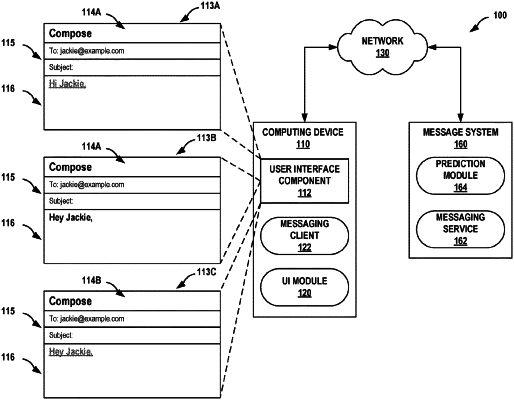| CPC G06F 40/274 (2020.01) [G06F 40/56 (2020.01); G06N 3/08 (2013.01); G06N 20/20 (2019.01); H04L 51/216 (2022.05); H04L 51/42 (2022.05)] | 19 Claims |

|
1. A method comprising:
receiving, by a computing system, an identification of a recipient of a first electronic message being composed from a message account associated with a user;
predicting, by the computing system and based on text contained in previous electronic messages sent from the message account, first text for a body of the first electronic message, wherein predicting the first text comprises predicting the first text using a machine learning model trained based on text contained in the previous electronic messages sent from the message account that were addressed to the recipient;
outputting, for display and at a first time, the first predicted text for optional selection and insertion into the body of the first electronic message;
receiving, at a second time that is after the first time, user input to not insert the first predicted text into the body of the first electronic message;
updating, at a third time that is after the second time and based on the user input to not insert the first predicted text into the body of the first electronic message, the machine learning model to generate an updated machine learning model;
predicting, based on text contained in previous electronic messages sent from the message account and using the updated machine learning model, second predicted text for a body of a subsequent electronic message to the recipient, wherein the second predicted text is different than the first predicted text; and
outputting, for display, the second predicted text for optional selection and insertion into the body of the subsequent electronic message.
|